
Deutsch-Chinesische Enzyklopädie, 德汉百科
 Slowenien
Slowenien
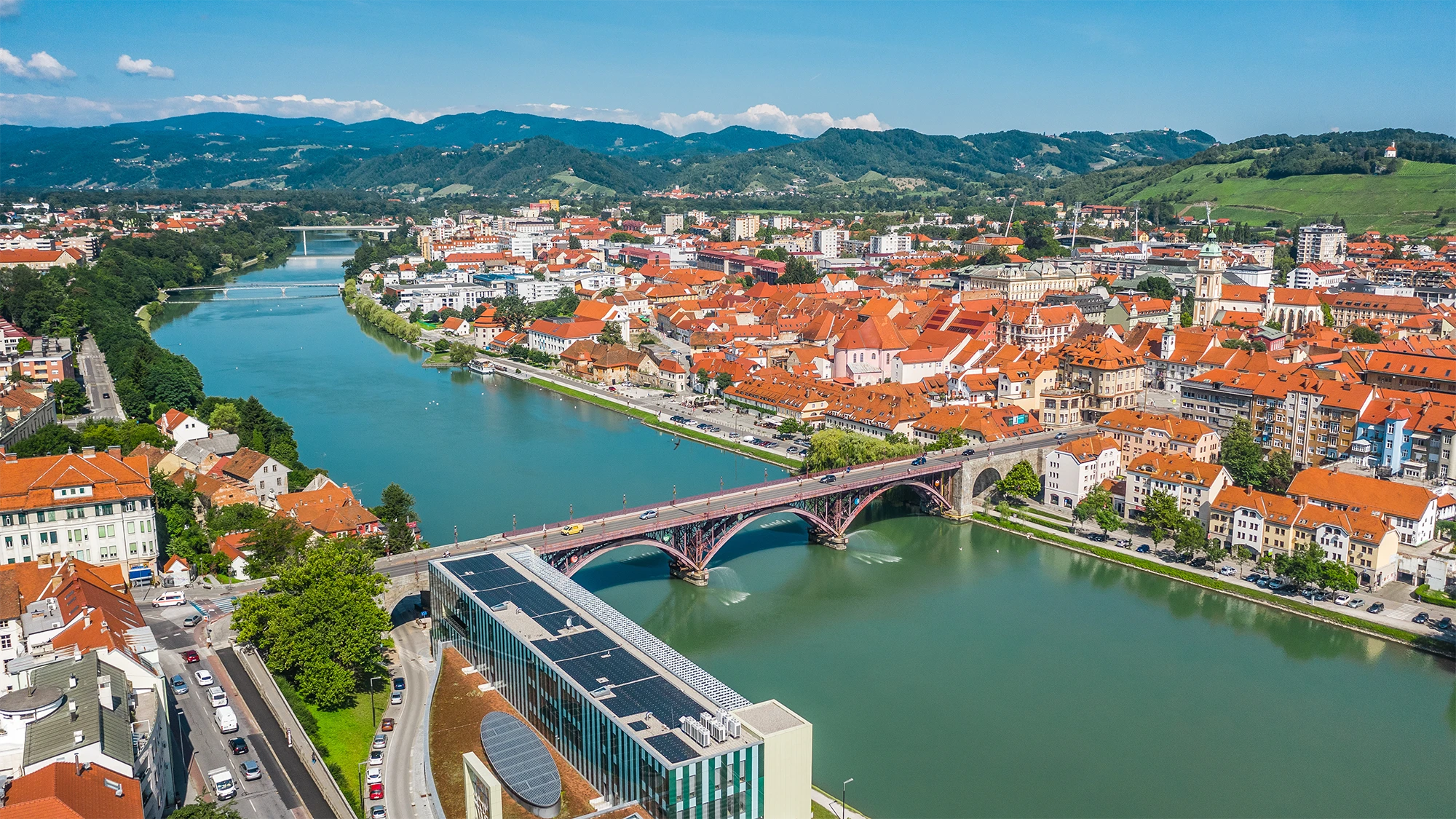
 *Mittelmeer
*Mittelmeer
 Ägypten
Ägypten
 Albanien
Albanien
 Algerien
Algerien
 Bernsteinstraße
Bernsteinstraße
 Bosnien-Herzegowina
Bosnien-Herzegowina
 Frankreich
Frankreich
 Gibraltar
Gibraltar
 Griechenland
Griechenland
 Israel
Israel
 Italien
Italien
 Kroatien
Kroatien
 Libanon
Libanon
 Libyen
Libyen
 Malta
Malta
 Malta
Malta
 Monaco
Monaco
 Montenegro
Montenegro
 Palästina
Palästina

 Rueckblick
Rueckblick
 Slowenien
Slowenien
 Spanien
Spanien
 Syrien
Syrien
 Tunesien
Tunesien
 Türkei
Türkei
 Zypern
Zypern

 Albanien
Albanien
 Bosnien-Herzegowina
Bosnien-Herzegowina
 Bulgarien
Bulgarien
 Estland
Estland
 Kosovo
Kosovo
 Kroatien
Kroatien
 Lettland
Lettland
 Litauen
Litauen
 Montenegro
Montenegro
 Nordmazedonien
Nordmazedonien
 Polen
Polen
 Rumänien
Rumänien
 Serbien
Serbien
 Slowakei
Slowakei
 Slowenien
Slowenien
 Tschechien
Tschechien
 Ungarn
Ungarn
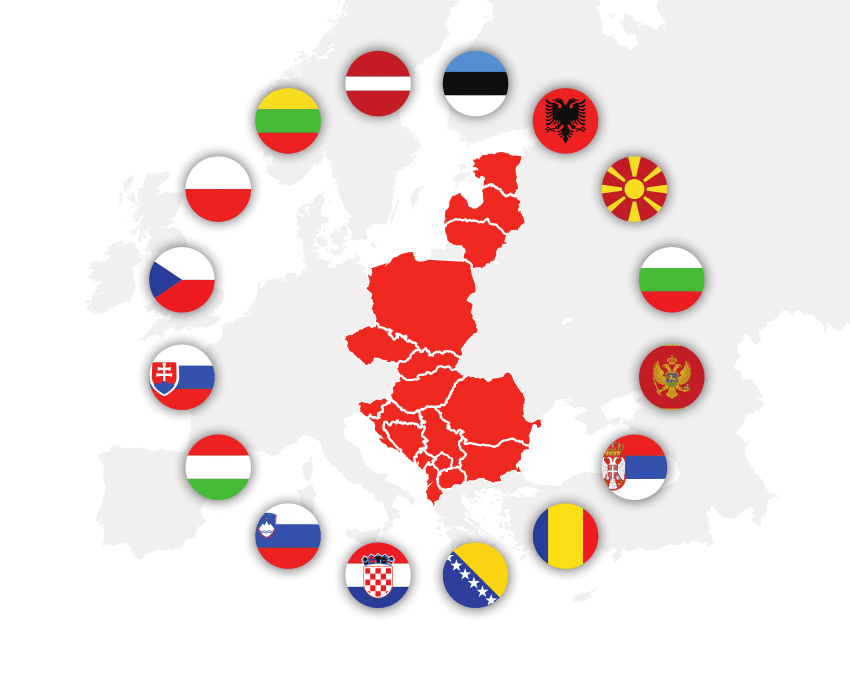
中东欧是一个欧洲大陆的地缘政治概念,包括冷战后影响力最大、统一后的德国,受德国影响及冷战时作为中立国的奥地利,冷战时期被苏联所控制的东欧卫星国,波罗的海三国(立陶宛、拉脱维亚、爱沙尼亚),再加上摩尔多瓦、白罗斯、乌克兰和俄罗斯。
为了避免意识形态和政治上的怀疑,同时为了弥补政治地理与自然地理的差距,中东欧是近年来兴起的一种称呼,特别是在冷战之后,大部分中东欧国家皆加入欧盟及北约,成为西方自由世界的一部分,中东欧的社会政治及经济发展日益受到西方自由阵营原有国家的关注。
Mittel- und osteuropäische Länder (德语) Центральная и Восточная Европа(俄语) Střední a východní Evropa (捷克语) Europa Środkowo-Wschodni (波兰语) Közép- és Kelet-Európa (马扎尔语) Центральна та Східна Європа (乌克兰语) Srednjoistočna Europa (克罗地亚语) Europa Centrală și de Est (罗马尼亚语) Централна и Източна Европа (保加利亚语) Средња и источна Европа (塞尔维亚语) Kesk- ja Ida-Euroopa riigid (爱沙尼亚语) Centrālā un Austrumeiropa (拉脱维亚语)
欧盟统计局目前使用 CEC 或 CEEC(中欧和东欧国家)这一术语来指中欧和东欧地区寻求加入欧盟的下列国家:
阿尔巴尼亚
波斯尼亚和黑塞哥维那
科索沃
北马其顿
黑山共和国
塞尔维亚
土耳其
在 2004 年 5 月 1 日加入欧洲联盟之前,下列国家也属于这一类别:
爱沙尼亚
拉脱维亚
立陶宛
波兰
匈牙利
捷克共和国
斯洛伐克
斯洛文尼亚
在 2007 年 1 月 1 日加入欧盟之前,以下国家也属于这一类别:
罗马尼亚
保加利亚
在 2013 年 7 月 1 日加入欧盟之前,以下国家也属于此类国家:克罗地亚
克罗地亚
Mittel- und osteuropäische Länder (MOEL), auch Mittel-/Osteuropa (MOE), steht für den gleichbedeutenden Begriff mittel- und osteuropäische Staaten (MOES). Der englische Ausdruck lautet CEE für englisch Central and Eastern Europe, der französische PECO für französisch Pays d’Europe centrale et orientale. Weitgehend identisch ist der EU-statistische Begriff Central and Eastern European Countries (CEC oder CEEC).
Welche Länder tatsächlich zu den mittel- und osteuropäischen Ländern gehören, ist unscharf abgegrenzt. Im engeren Sinn wird der Begriff für jene Länder gebraucht, die im Rahmen der EU-Erweiterung 2004 und 2007 in die Europäische Union aufgenommen wurden (EU-12), bzw. für jene Staaten des Westbalkans, die sich im Erweiterungsprozess befinden. Die ebenfalls unscharf abgegrenzte Großregion Ostmitteleuropa ist ein Teil der MOEL.
中東欧(ちゅうとうおう)は、ヨーロッパの区分で、様々に解釈されるが、主に二つの意味がある。
- 中欧(中央ヨーロッパ)と東欧(東ヨーロッパ)を合わせた地域。(この場合中・東欧とも書く。他のヨーロッパの区分と違い、「中東とヨーロッパ」と取られる可能性もあるため、中東ヨーロッパとはほとんど言わない)。
- 中欧のうち過去に東側諸国に組み込まれていた地域で、かつ2004年以降に欧州連合(EU)に加盟した諸国のみを指す。
日本では1.の意味で用いられることが多く、英語圏などではでは中東欧を一般に「CEE」と表記し、2.の意味で用いることも多い。
Central and Eastern Europe, abbreviated CEE, is a term encompassing the countries in Central Europe (the Visegrád Group), the Baltics, Eastern Europe, and Southeastern Europe (Balkans), usually meaning former communist states from the Eastern Bloc (Warsaw Pact) in Europe. Scholarly literature often uses the abbreviations CEE or CEEC for this term.[1][2][3] The Organisation for Economic Co-operation and Development also uses the term "Central and Eastern European Countries (CEECs)" for a group comprising some of these countries.
Depuis les années 1990, la plupart des pays européens dont la majeure partie du territoire s'étend à l'est du 15e degré de longitude Est sont parfois collectivement désignés sous l'appellation de pays de l'Europe centrale et orientale (PECO). Toutefois, la Suède, la Finlande, la Grèce et Chypre ne sont pas considérés dans cet ensemble malgré leur situation géographique, cette notion étant généralement réservée aux anciens pays du bloc de l'Est et aux États européens issus de la dislocation de l'URSS comme les pays baltes, ainsi que de la Tchécoslovaquie et de la Yougoslavie.
Europa centro-orientale è la designazione, usata soprattutto in ambito accademico, della regione d'Europa comprendente la parte orientale dell'Europa centrale. Ne fanno parte le seguenti nazioni che si estendono ad est della Germania e sono comprese fra il Mar Baltico al nord e la Grecia a sud[1]:
Центральная и Восточная Европа (ЦВЕ) (англ. Central and Eastern Europe, CEE) — бывшие социалистические государства Восточной Европы, не входящие в СНГ.
В литературе встречаются название — Восточно-Центральная Европа (ВЦЕ).
 *Mittelmeer
*Mittelmeer
 Ägypten
Ägypten
 Albanien
Albanien
 Algerien
Algerien
 Bernsteinstraße
Bernsteinstraße
 Bosnien-Herzegowina
Bosnien-Herzegowina
 Frankreich
Frankreich
 Gibraltar
Gibraltar
 Griechenland
Griechenland
 Israel
Israel
 Italien
Italien
 Kroatien
Kroatien
 Libanon
Libanon
 Libyen
Libyen
 Malta
Malta
 Marokko
Marokko
 Monaco
Monaco
 Montenegro
Montenegro
 Palästina
Palästina
 Slowenien
Slowenien
 Spanien
Spanien
 Syrien
Syrien
 Tunesien
Tunesien
 Türkei
Türkei
 Zypern
Zypern
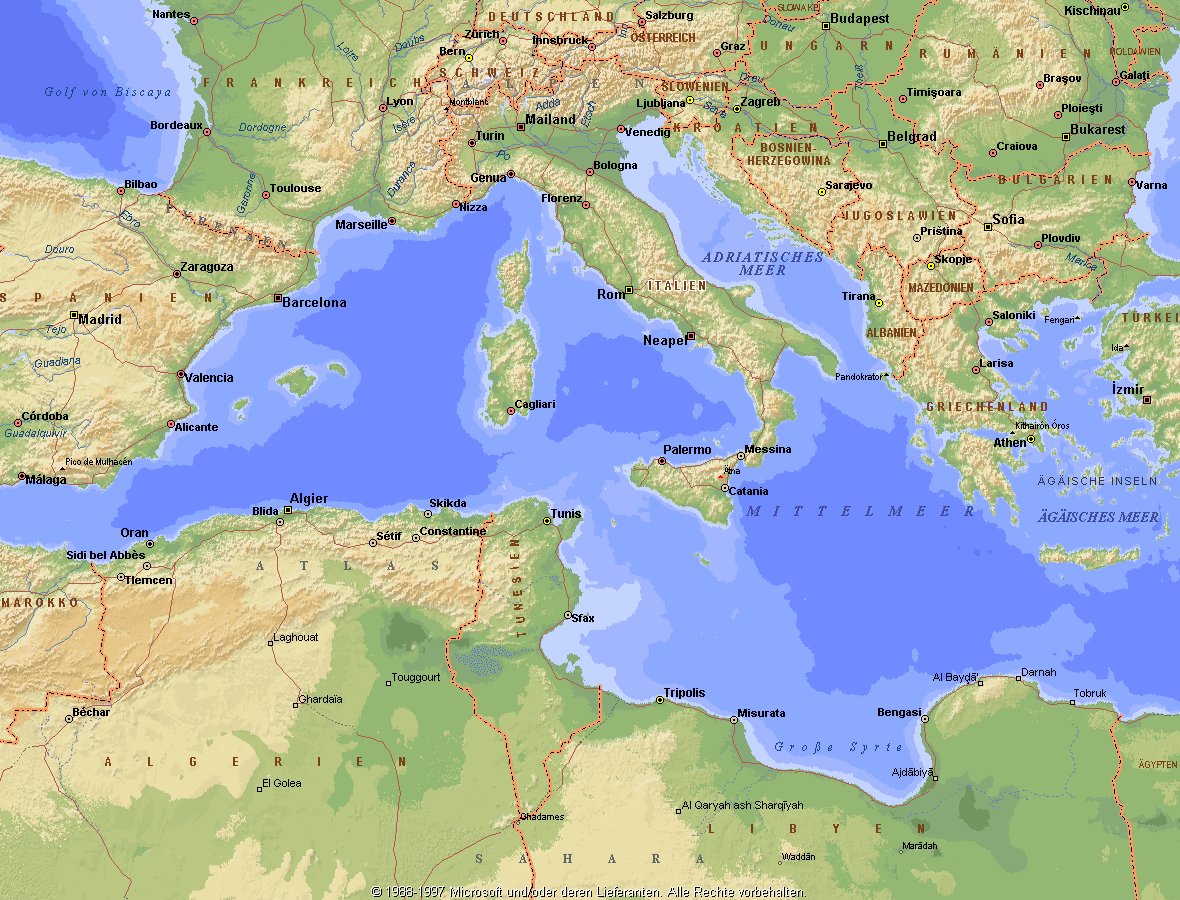
地中海,由北面的欧洲大陆,南面的非洲大陆以及东面的亚洲大陆包围着。东西长约4000千米,南北最宽处大约为1800千米,面积251.6万平方千米,是世界最大的陆间海。地中海的平均深度是1500米,最深处为5267米。
地中海西部通过直布罗陀海峡与大西洋相接,东部通过土耳其海峡(达达尼尔海峡和博斯普鲁斯海峡、马尔马拉海)和黑海相连。19世纪时开通了的苏伊士运河,接通了地中海与红海。 地中海是世界上最古老的海之一,[3] 而其附属的大西洋却是年轻的海洋。地中海处在欧亚板块和非洲板块交界处,是世界最强地震带之一。地中海地区有维苏威火山、埃特纳火山。
地中海作为陆间海,风浪较小,加之沿岸海岸线曲折、岛屿众多,拥有许多天然良好的港口,成为沟通三个大陆的交通要道。这样的条件,使地中海从古代开始海上贸易就很繁盛,促进了古代古埃及文明、古希腊文明、罗马帝国等的发展。现在也是世界海上交通的重要地区之一。其沿岸的腓尼基人、克里特人、希腊人,以及后来的葡萄牙人和西班牙人都是航海业发达的民族。著名的航海家如哥伦布、达·伽马、麦哲伦等,都出自地中海沿岸的国家。
地中海的沿岸夏季炎热干燥,冬季温暖湿润,被称作地中海性气候。植被,叶质坚硬,叶面有蜡质,根系深,有适应夏季干热气候的耐旱特征,属亚热带常绿硬叶林。这里光热充足,是欧洲主要的亚热带水果产区,盛产柑橘、无花果,和葡萄等,还有木本油料作物油橄榄。
Das Mittelmeer (lateinisch Mare Mediterraneum,[1] deshalb deutsch auch Mittelländisches Meer, präzisierend Europäisches Mittelmeer, im Römischen Reich Mare Nostrum) ist ein Mittelmeer zwischen Europa, Afrika und Asien, ein Nebenmeer des Atlantischen Ozeans und, da es mit der Straße von Gibraltar nur eine sehr schmale Verbindung zum Atlantik besitzt, auch ein Binnenmeer. Im Arabischen und Türkischen wird es auch als „Weißes Meer“ (البحر الأبيض/al-baḥr al-abyaḍ bzw. türk. Akdeniz) bezeichnet.
Zusammen mit den darin liegenden Inseln und den küstennahen Regionen Südeuropas, Vorderasiens und Nordafrikas bildet das Mittelmeer den Mittelmeerraum, der ein eigenes Klima (mediterranes Klima) hat und von einer eigenen Flora und Fauna geprägt ist.
地中海(ちちゅうかい、ラテン語: Mare Mediterraneum)は、北と東をユーラシア大陸、南をアフリカ大陸(両者で世界島)に囲まれた地中海盆地に位置する海である。面積は約3000平方キロメートル、平均水深は約1500メートル[2]。海洋学上の地中海の一つ。
地中海には、独立した呼称を持ついくつかの海域が含まれる(エーゲ海、アドリア海など)。地中海と接続する他の海としては、ジブラルタル海峡の西側に大西洋が、ダーダネルス海峡を経た北東にマルマラ海と黒海があり、南西はスエズ運河で紅海と結ばれている(「海域」「地理」で詳述)。
北岸の南ヨーロッパ、東岸の中近東、南岸の北アフリカは古代から往来が盛んで、「地中海世界」と総称されることもある[3]。
The Mediterranean Sea is a sea connected to the Atlantic Ocean, surrounded by the Mediterranean Basin and almost completely enclosed by land: on the north by Southern Europe and Anatolia, on the south by North Africa and on the east by the Levant. Although the sea is sometimes considered a part of the Atlantic Ocean, it is usually identified as a separate body of water. Geological evidence indicates that around 5.9 million years ago, the Mediterranean was cut off from the Atlantic and was partly or completely desiccated over a period of some 600,000 years, the Messinian salinity crisis, before being refilled by the Zanclean flood about 5.3 million years ago.
It covers an approximate area of 2.5 million km2 (965,000 sq mi), but its connection to the Atlantic (the Strait of Gibraltar) is only 14 km (8.7 mi) wide. The Strait of Gibraltar is a narrow strait that connects the Atlantic Ocean to the Mediterranean Sea and separates Gibraltar and Spain in Europe from Morocco in Africa. In oceanography, it is sometimes called the Eurafrican Mediterranean Sea or the European Mediterranean Sea to distinguish it from mediterranean seas elsewhere.[2][3]
The Mediterranean Sea has an average depth of 1,500 m (4,900 ft) and the deepest recorded point is 5,267 m (17,280 ft) in the Calypso Deep in the Ionian Sea. The sea is bordered on the north by Europe, the east by Asia, and in the south by Africa. It is located between latitudes 30° and 46° N and longitudes 6° W and 36° E. Its west-east length, from the Strait of Gibraltar to the Gulf of Iskenderun, on the southwestern coast of Turkey, is approximately 4,000 km (2,500 miles). The sea's average north-south length, from Croatia’s southern shore to Libya, is approximately 800 km (500 miles). The Mediterranean Sea, including the Sea of Marmara (connected by the Dardanelles to the Aegean Sea), has a surface area of approximately 2,510,000 square km (970,000 square miles).[4]
The sea was an important route for merchants and travellers of ancient times that allowed for trade and cultural exchange between emergent peoples of the region. The history of the Mediterranean region is crucial to understanding the origins and development of many modern societies.
The countries surrounding the Mediterranean in clockwise order are Spain, France, Monaco, Italy, Slovenia, Croatia, Bosnia and Herzegovina, Montenegro, Albania, Greece, Turkey, Syria, Lebanon, Israel, Egypt, Libya, Tunisia, Algeria, and Morocco; Malta and Cyprus are island countries in the sea. In addition, the Gaza Strip and the British Overseas Territories of Gibraltar and Akrotiri and Dhekelia have coastlines on the sea.
La mer Méditerranée (prononcé [me.di.tɛ.ʁa.ne]) est une mer intercontinentale presque entièrement fermée, bordée par les côtes d'Europe du sud, d’Afrique du Nord et d’Asie, depuis le détroit de Gibraltar à l'ouest aux entrées des Dardanelles et du canal de Suez à l'est. Elle s’étend sur une superficie d’environ 2,5 millions de kilomètres carrés. Son ouverture vers l’océan Atlantique par le détroit de Gibraltar est large de 14 kilomètres.
Elle doit son nom au fait qu’elle est littéralement une « mer au milieu des terres », en latin « mare medi terra »1.
Durant l’Antiquité, la Méditerranée était une importante voie de transports maritimes permettant l’échange commercial et culturel entre les peuples de la région — les cultures mésopotamiennes, égyptienne, perse, phénicienne, carthaginoise, berbère, grecque, arabe (conquête musulmane), ottomane, byzantine et romaine. L’histoire de la Méditerranée est importante dans l’origine et le développement de la civilisation occidentale.
Il mar Mediterraneo, detto brevemente Mediterraneo, è un mare intercontinentale situato tra Europa, Nordafrica e Asia occidentale connesso all'Oceano Atlantico. La sua superficie approssimativa è di 2,51 milioni di km² e ha uno sviluppo massimo lungo i paralleli di circa 3 700 km. La lunghezza totale delle sue coste è di 46 000 km, la profondità media si aggira sui 1 500 m, mentre quella massima è di 5 270 m presso le coste del Peloponneso. La salinità media si aggira dal 36,2 al 39 ‰.[2] La popolazione presente negli stati bagnati dalle sue acque ammonta a circa 450 milioni di persone.[2].
El mar Mediterráneo es uno de los mares del Atlántico. Está rodeado por la región mediterránea, comprendida entre Europa meridional, Asia Occidental y África septentrional. Fue testigo de la evolución de varias civilizaciones como los egipcios, los fenicios, hebreos, griegos, cartagineses, romanos, etc. Con aproximadamente 2,5 millones de km² y 3.860 km de longitud, es el segundo mar interior más grande del mundo, después del Caribe.1 Sus aguas, que bañan las tres penínsulas del sur de Europa (Ibérica, Itálica, Balcánica) y una de Asia (Anatolia), comunican con el océano Atlántico a través del estrecho de Gibraltar, con el mar Negro por los estrechos del Bósforo y de los Dardanelos y con el mar Rojo por el canal de Suez.2 Es el mar con las tasas más elevadas de hidrocarburos y contaminación del mundo.3
Средизе́мное мо́ре — межматериковое море, по происхождению представляющее собой глубоководную псевдоабиссальную внутришельфовую депрессию[1][2], связанную на западе с Атлантическим океаном Гибралтарским проливом[3].
В Средиземном море выделяют, как его составные части, моря: Адриатическое, Альборан, Балеарское, Ионическое, Кипрское, Критское, Левантийское, Ливийское, Лигурийское, Тирренское и Эгейское. В бассейн Средиземного моря также входят Мраморное, Чёрное и Азовское моря.
 *Mittelmeer
*Mittelmeer
 Albanien
Albanien

 Essen und Trinken
Essen und Trinken
 Türkische Küche
Türkische Küche

 Essen und Trinken
Essen und Trinken
 Spanische Küche
Spanische Küche

 Essen und Trinken
Essen und Trinken
 Griechische Küche
Griechische Küche

 Essen und Trinken
Essen und Trinken
 Portugiesische Küche
Portugiesische Küche
 Griechenland
Griechenland
 Israel
Israel
 Italien
Italien
 Kroatien
Kroatien
 Libanon
Libanon
 Malta
Malta
 Marokko
Marokko
 Portugal
Portugal
 Slowenien
Slowenien
 Spanien
Spanien
 Türkei
Türkei
 Zypern
Zypern

Als Grundelemente der Landesküchen der Mittelmeerregion gelten: Olivenöl und Oliven frisches Gemüse wie Tomaten, Auberginen, Paprika, Zucchini Knoblauch, Lauch und Zwiebel Fisch und Meeresfrüchte Kräuter und Gewürze wie Thymian, Rosmarin, Koriander, Salbei, Fenchel, Kümmel, Anis, Oregano und Basilikum helles Brot, Nudeln und Reis in einigen Ländern regelmäßiger Rotweingenuss zum Essen.
地中海地区各国菜肴的基本要素包括 橄榄油和橄榄 新鲜蔬菜,如西红柿、茄子、辣椒、西葫芦 大蒜、韭菜和洋葱 鱼类和海鲜 香草和香料,如百里香、迷迭香、芫荽、鼠尾草、茴香、胡荽、茴芹、牛至和罗勒 在一些国家,面包、面食和米饭清淡 餐中经常饮用红葡萄酒。

 *Politisches System der Vereinigten Staaten
*Politisches System der Vereinigten Staaten
 *Politisches System des Vereinigten Königreichs
*Politisches System des Vereinigten Königreichs
 *Politisches System Frankreichs
*Politisches System Frankreichs
 Albanien
Albanien
 Belgien
Belgien
 Bulgarien
Bulgarien
 Dänemark
Dänemark
 Deutschland
Deutschland
 Estland
Estland
 Finnland
Finnland
 Frankreich
Frankreich
 Generalsekretäre der Nordatlantikpakt-Organisation
Generalsekretäre der Nordatlantikpakt-Organisation
 Anders Fogh Rasmussen
Anders Fogh Rasmussen
 Generalsekretäre der Nordatlantikpakt-Organisation
Generalsekretäre der Nordatlantikpakt-Organisation
 Dirk Stikker
Dirk Stikker
 Generalsekretäre der Nordatlantikpakt-Organisation
Generalsekretäre der Nordatlantikpakt-Organisation
 George Robertson
George Robertson
 Generalsekretäre der Nordatlantikpakt-Organisation
Generalsekretäre der Nordatlantikpakt-Organisation
 Hastings Ismay, 1. Baron Ismay
Hastings Ismay, 1. Baron Ismay
 Generalsekretäre der Nordatlantikpakt-Organisation
Generalsekretäre der Nordatlantikpakt-Organisation
 Jaap de Hoop Scheffer
Jaap de Hoop Scheffer
 Generalsekretäre der Nordatlantikpakt-Organisation
Generalsekretäre der Nordatlantikpakt-Organisation
 Javier Solana
Javier Solana
 Generalsekretäre der Nordatlantikpakt-Organisation
Generalsekretäre der Nordatlantikpakt-Organisation
 Jens Stoltenberg
Jens Stoltenberg
 Generalsekretäre der Nordatlantikpakt-Organisation
Generalsekretäre der Nordatlantikpakt-Organisation
 Joseph Luns
Joseph Luns
 Generalsekretäre der Nordatlantikpakt-Organisation
Generalsekretäre der Nordatlantikpakt-Organisation
 Manfred Wörner
Manfred Wörner
 Generalsekretäre der Nordatlantikpakt-Organisation
Generalsekretäre der Nordatlantikpakt-Organisation
 Manlio Giovanni Brosio
Manlio Giovanni Brosio
 Generalsekretäre der Nordatlantikpakt-Organisation
Generalsekretäre der Nordatlantikpakt-Organisation
 Paul-Henri Spaak
Paul-Henri Spaak
 Generalsekretäre der Nordatlantikpakt-Organisation
Generalsekretäre der Nordatlantikpakt-Organisation
 Peter Carington, 6. Baron Carrington
Peter Carington, 6. Baron Carrington
 Generalsekretäre der Nordatlantikpakt-Organisation
Generalsekretäre der Nordatlantikpakt-Organisation
 Sergio Balanzino
Sergio Balanzino
 Generalsekretäre der Nordatlantikpakt-Organisation
Generalsekretäre der Nordatlantikpakt-Organisation
 Willy Claes
Willy Claes

 Geschichte
Geschichte
 Griechenland
Griechenland
 Island
Island
 Italien
Italien
 Kanada
Kanada
 Kroatien
Kroatien
 Lettland
Lettland
 Litauen
Litauen
 Luxemburg
Luxemburg

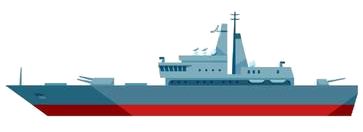
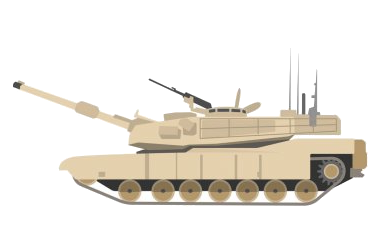
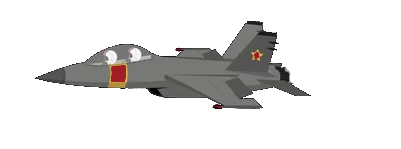
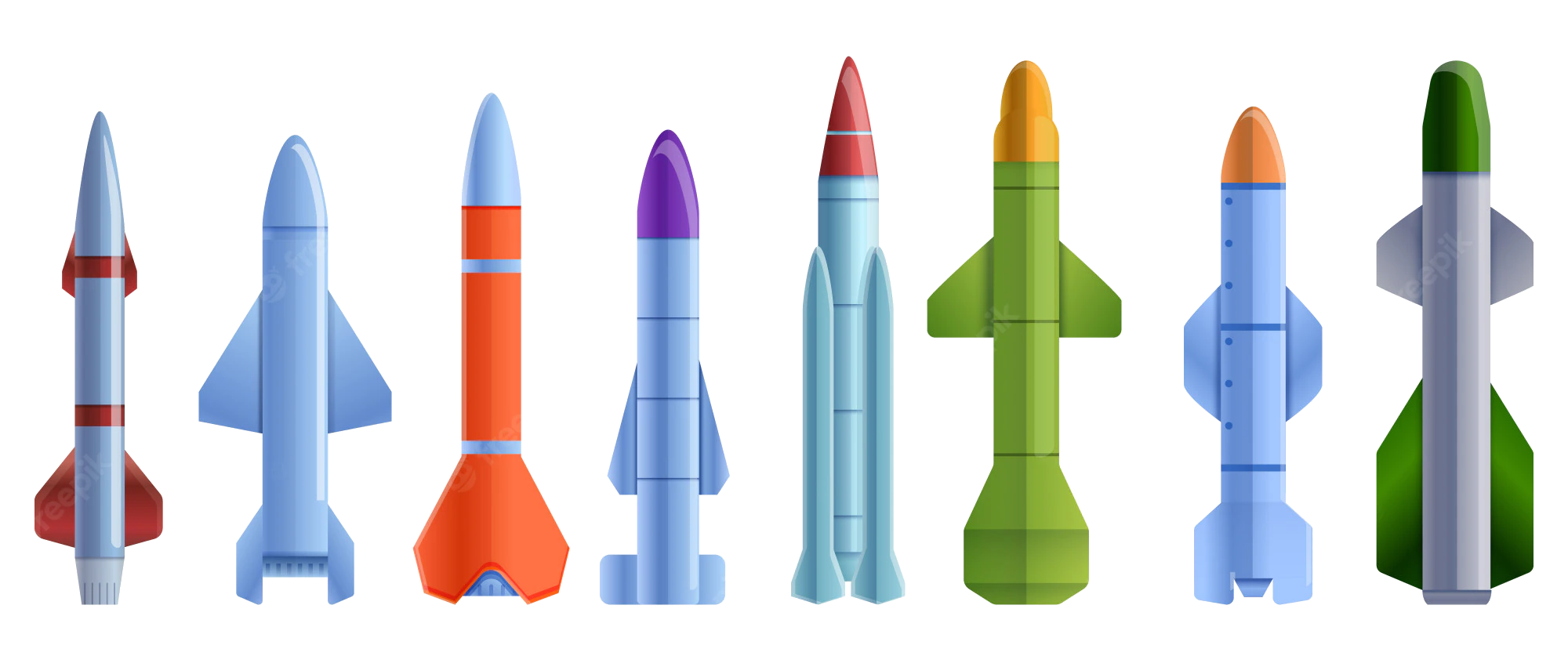 Militär,Verteidigung und Ausrüstung
Militär,Verteidigung und Ausrüstung

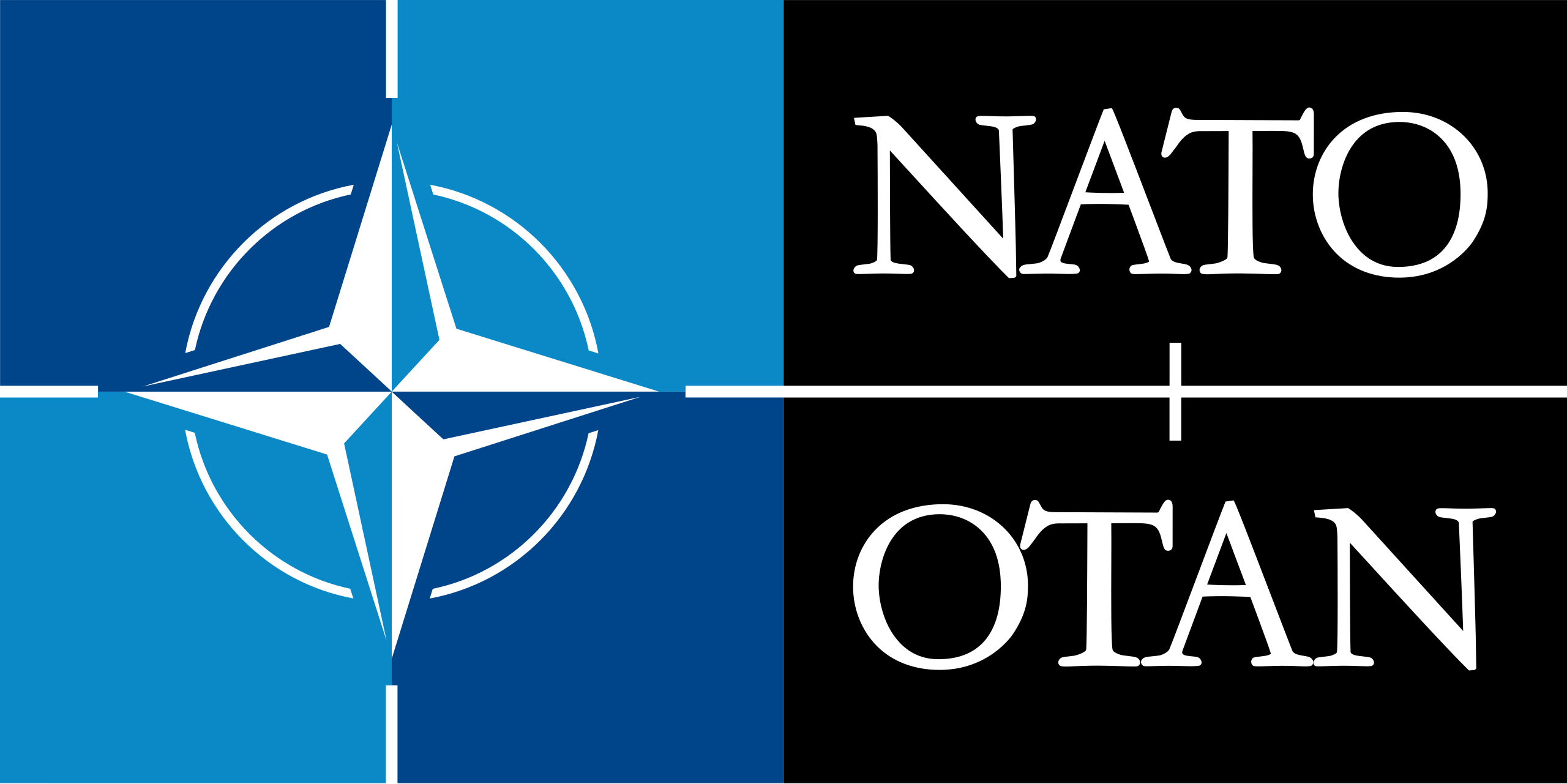 Mitglieder der NATO
Mitglieder der NATO
 Montenegro
Montenegro

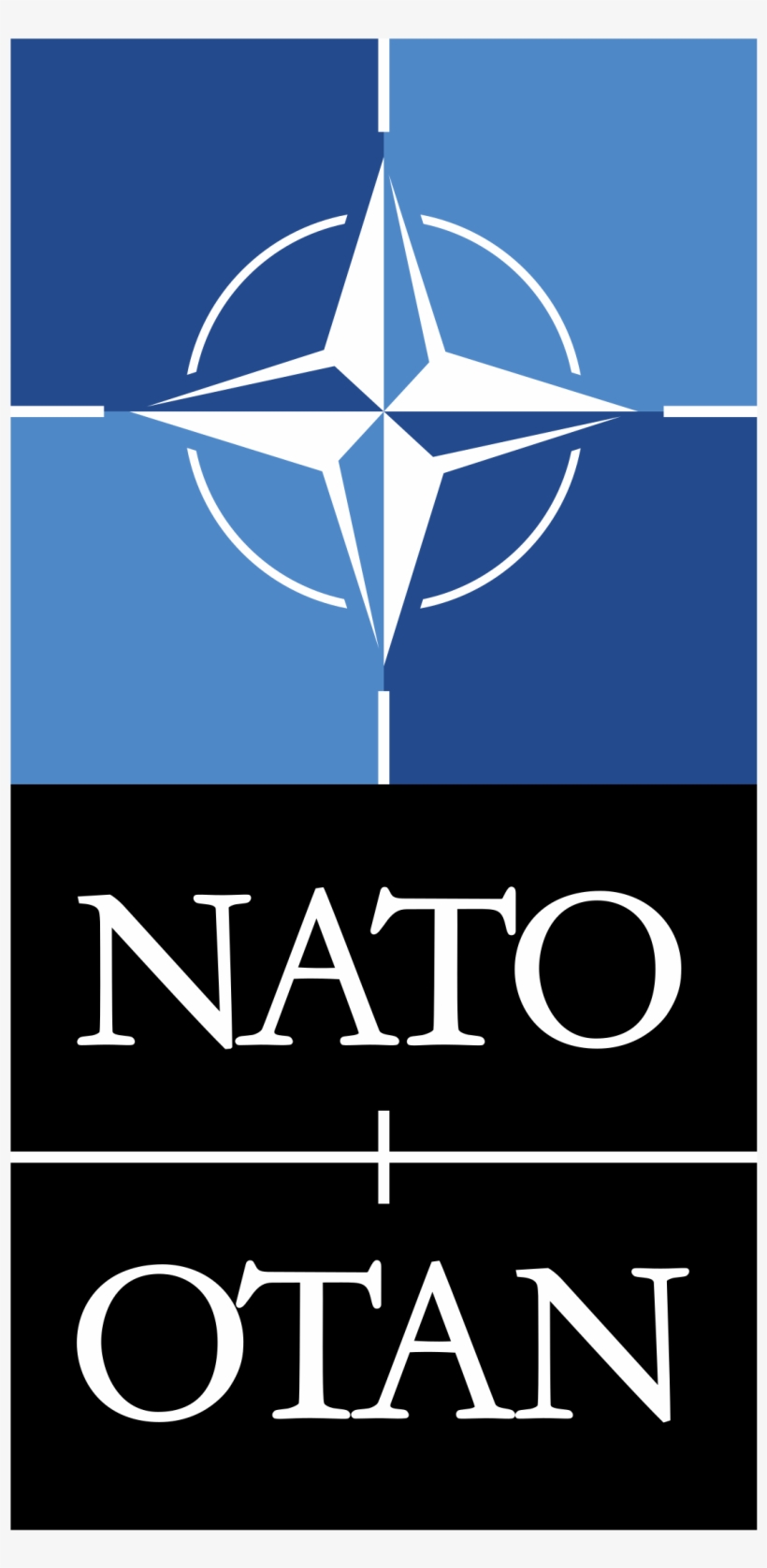 NATO summit
NATO summit
 Niederlande
Niederlande
 Nordmazedonien
Nordmazedonien
 Norwegen
Norwegen

 Parteien und Regierung
Parteien und Regierung
 Polen
Polen
 Portugal
Portugal
 Rumänien
Rumänien
 Schweden
Schweden
 Slowakei
Slowakei
 Slowenien
Slowenien
 Spanien
Spanien
 Tschechien
Tschechien
 Türkei
Türkei
 Ungarn
Ungarn
 Vereinigte Staaten
Vereinigte Staaten
 Vereinigtes Königreich
Vereinigtes Königreich

 Wichtige internationale Organisationen
Wichtige internationale Organisationen
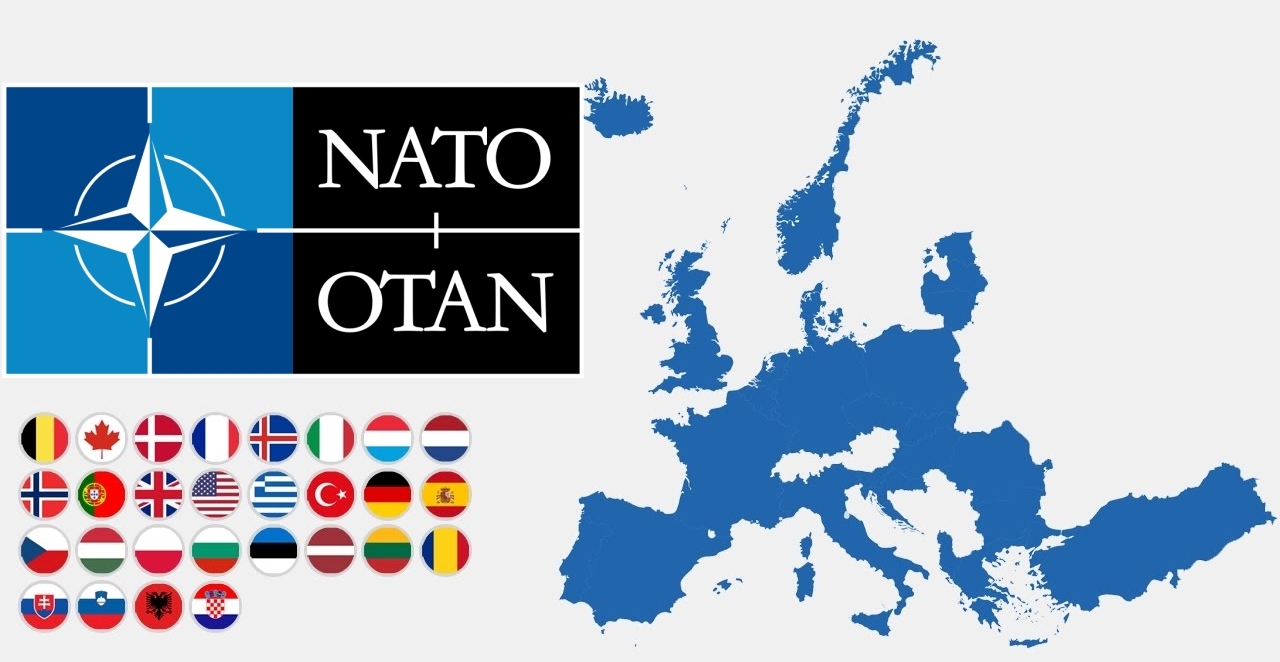
北大西洋公约组织(英语:North Atlantic Treaty Organization,缩写为NATO;法语:Organisation du Traité de l'Atlantique Nord,缩写为OTAN),简称北约组织或北约,是欧洲及北美洲国家为实现防卫合作而建立的国际组织。1949年3月18日,美国、英国及法国公开建立北大西洋公约组织,于同年4月4日在美国华盛顿签署《北大西洋公约》后正式成立。为与以前苏联为首的东欧集团国成员相抗衡。及至苏联解体,华沙条约组织宣告解散,北约就成为一个地区性防卫协作组织。北约的最高决策机构是北约理事会。理事会由成员国国家元首及政府高层、外长、国防部长组成。总部设在比利时的布鲁塞尔。最新成员黑山于2017年6月5日加入,至此北约总共有跨域欧洲和北美的29个国家组成。北约军事开支占世界国防开支的70%[4],成员国国防开支占该国GDP的2%左右[5]。
公约第5条规定成员国受到的攻击一旦被确认,其他成员国将作出即时反应。该条款被理解为各国部队将自动参战,并不再次需要各国政府的参战授权。但这一条条款在九一一事件之前,一直都未有动用过[6] 。北约曾协助反海盗行动(counter-piracy operations),在联合国要求下打击亚丁湾、非洲之角和印度洋的海盗[7],并在2011年根据联合国安理会1973号决议将利比亚上空设为禁飞区。
Die NATO (englisch North Atlantic Treaty Organization „Organisation des Nordatlantikvertrags“ bzw. Nordatlantikpakt-Organisation), im Deutschen häufig als Atlantisches Bündnis oder als Nordatlantikpakt bezeichnet (französisch OTAN – Organisation du Traité de l’Atlantique Nord), ist eine Internationale Organisation ohne Hoheitsrechte. Ihre Mitgliedstaaten behalten ihre volle Souveränität und Unabhängigkeit. Basis der NATO ist der Nordatlantikvertrag nach Artikel 51 der UN-Charta. Ihre Organisation versteht sich nicht nur als Verteidigungsbündnis, sondern auch als militärisch-politische Organisation von 29 europäischen und nordamerikanischen Mitgliedstaaten mit dem Ziel eigener Sicherheit und weltweiter Stabilität.
Das NATO-Hauptquartier beherbergt den Nordatlantikrat (das Hauptorgan der NATO) und seine unmittelbar nachgeordneten Einrichtungen, den International Staff (IS) und den International Military Staff (IMS); diese Institution hat seit 1967 ihren Sitz in Brüssel. Nach der Unterzeichnung des Nordatlantikpakts am 4. April 1949 – vorerst auf 20 Jahre – war das Hauptquartier zunächst in London ansässig und anschließend von 16. April 1952 bis 1967 in Paris angesiedelt worden.
Die beiden wichtigsten militärischen Hauptquartiere sind das ACO (aus historischen und juristischen Gründen auch als Supreme Headquarters Allied Powers Europe / SHAPE bezeichnet) im belgischen Casteau bei Mons und das Allied Command Transformation (ACT) in der US-Stadt Norfolk (Virginia).
北大西洋条約機構(きたたいせいようじょうやくきこう)は、北大西洋条約に基づき、アメリカ合衆国を中心とした北アメリカ(=アメリカとカナダ)およびヨーロッパ諸国によって結成された軍事同盟である。29カ国が加盟し、日本など非加盟国とも協力関係にある[1]。前身はブリュッセル条約 (1948年)。ベルギー首都ブリュッセルに本部を置く[2]。
略称は頭字語が用いられ、英語圏では、North Atlantic Treaty Organization を略した NATO(ネイトー)と呼ばれ、日本やドイツ語圏では NATO(ナトー)、フランス語圏・スペイン語圏・ポルトガル語圏等では OTAN(オタン)と呼ばれる。
The North Atlantic Treaty Organization (NATO /ˈneɪtoʊ/; French: Organisation du Traité de l'Atlantique Nord; OTAN), also called the North Atlantic Alliance, is an intergovernmental military alliance between 29 North American and European countries. The organization implements the North Atlantic Treaty that was signed on 4 April 1949.[3][4] NATO constitutes a system of collective defence whereby its independent member states agree to mutual defence in response to an attack by any external party. NATO’s Headquarters are located in Haren, Brussels, Belgium, while the headquarters of Allied Command Operations is near Mons, Belgium.
Since its founding, the admission of new member states has increased the alliance from the original 12 countries to 29. The most recent member state to be added to NATO is Montenegro on 5 June 2017. NATO currently recognizes Bosnia and Herzegovina, Georgia, Macedonia and Ukraine as aspiring members.[5] An additional 21 countries participate in NATO's Partnership for Peace program, with 15 other countries involved in institutionalized dialogue programs. The combined military spending of all NATO members constitutes over 70% of the global total.[6] Members have committed to reach or maintain defense spending of at least 2% of GDP by 2024.[7][8]
L’Organisation du traité de l'Atlantique norda (en anglais : North Atlantic Treaty Organization) est l'organisation politico-militaire mise en place par les pays signataires du traité de l'Atlantique nord afin de pouvoir remplir leurs obligations de sécurité et de défense collectives. Elle est le plus souvent désignée par son acronyme OTAN (en anglais NATO) mais aussi fréquemment nommée l’Alliance atlantique, plus rarement l’Alliance euro-atlantique ou l’Alliance transatlantique5, ou parfois, encore plus brièvement, simplement l’Alliance.
Le texte de ce traité, signé le 4 avril 1949, établit le Conseil de l'Atlantique nord (CAN), et lui donne mission de mettre en place l'organisation nécessaire à son application. Le choc provoqué par le déclenchement de la guerre de Corée conduit le CAN à décider fin 1950 la création d'une organisation militaire intégrée permanente, qui constitue encore actuellement la marque distinctive de l'OTAN et lui assure des capacités militaires qu'aucune autre alliance de défense ne possède. Sous le vocable OTAN, l'usage a prévalu d'englober l'alliance juridiquement conclue par les pays signataires du traité de l'Atlantique nord, et l'organisation civile et militaire mise en place pour en rendre opérants les objectifs. La France toutefois a fait exception en décidant en 1966, tout en restant membre de l'Alliance atlantique, de quitter l'organisation militaire intégrée, dont elle est redevenue membre à part entière en 2009.
L'Alliance voit le jour dans le contexte général des débuts de la guerre froide et plus spécifiquement pendant le blocus de Berlin exercé par les Soviétiques. Elle a pour vocation initiale d'assurer la sécurité de l'Europe occidentale en instaurant un couplage fort avec les États-Unis, seul moyen aux yeux des Européens après la Seconde Guerre mondiale de se prémunir contre toute tentative expansionniste de l'Union soviétique. Selon le mot de son premier secrétaire général, Lord Ismay, le rôle de l'OTAN consiste à « garder les Russes à l'extérieur, les Américains à l'intérieur et les Allemands sous tutelle »b. L'OTAN constitue le noyau dur du bloc de l'Ouest. Entre 1955 et 1991, l'adversaire désigné de l'OTAN est le pacte de Varsovie formé par les Soviétiques à la suite de l'adhésion de la RFA à l'Alliance atlantique et à son réarmement. L'OTAN s'organise donc pour faire face à cette menace par la définition de concepts stratégiques touchant notamment les questions relatives aux armes nucléaires, par la planification coordonnée entre tous ses membres de leurs moyens militaires, et par des commandements intégrés par zone géographique, dont le SHAPE est de loin le plus important.
Depuis la dissolution de l'URSS et la fin de la guerre froide en 1991, l'Alliance atlantique a perduré malgré la disparition de sa principale raison d'être initiale. Elle a procédé à son élargissement à d'anciens pays du bloc de l'Est et d'anciennes républiques de l'Union soviétique. Elle a pris en compte de nouvelles crises et menaces comme les conflits nationalistes dans l'ex-Yougoslavie, l'essor du terrorisme international ou la prolifération des armes de destruction massive, en conséquence de quoi l'OTAN a revu en profondeur son concept stratégique et son organisation civile et militaire à plusieurs reprises. Elle a développé une politique systématique de partenariats en Europe et dans le monde, au titre de laquelle les pays de l'Alliance ont établi depuis 1994 un partenariat pour la paix (PPP) avec la Russie, les pays de sa zone d'influence et avec les pays neutres d'Europe occidentale. L'OTAN a aussi mis en place en 2002 avec l'UE une relation privilégiée, l'Identité européenne de sécurité et de défense (IESD), qui permet à cette dernière de bénéficier de moyens de l'OTAN pour certaines opérations entrant dans le cadre de sa politique de sécurité et de défense commune.
Le siège de l'OTAN, initialement situé à Londres puis à Paris (dans les locaux désormais occupés par l'université Paris-Dauphine - PSL) se trouve depuis 1966 à Haren (Bruxelles), et son principal commandement militaire, le SHAPE, initialement installé à Rocquencourt (France), se trouve aujourd'hui à Maisières (Mons), également en Belgique.
L'Organizzazione del Trattato dell'Atlantico del Nord (in inglese North Atlantic Treaty Organization, in sigla NATO,[3] in francese: Organisation du Traité de l'Atlantique Nord, in sigla OTAN) è un'organizzazione internazionale per la collaborazione nel settore della difesa.
Il trattato istitutivo della NATO, il Patto Atlantico, fu firmato a Washington il 4 aprile 1949, ovvero nell'immediato secondo dopoguerra, ed entrò in vigore il 24 agosto dello stesso anno. Attualmente, fanno parte della NATO 29 stati del mondo.
La Organización del Tratado del Atlántico Norte u OTAN (en inglés: North Atlantic Treaty Organization o NATO; en francés: Organisation du Traité de l'Atlantique Nord u OTAN), también denominada Alianza del Atlántico, Alianza del Atlántico Norte o Alianza Atlántica, es una alianza militar intergubernamental basada en el Tratado del Atlántico Norte o Tratado de Washington firmado el 4 de abril de 1949. La organización constituye un sistema de defensa colectiva, en la cual los Estados miembros acuerdan defender a cualquiera de sus miembros si son atacados por una potencia externa.3
La sede de la OTAN se encuentra en Bruselas, Bélgica, uno de los veintinueve Estados miembros de la organización que se extiende por Norteamérica y Europa. La última incorporación fue Montenegro, en junio de 2017. Además, veintiún países colaboran con la OTAN dentro del programa Asociación para la Paz, con otros quince involucrados en programas de diálogo y nueve como socios globales. En 2017, el gasto militar combinado de los veintinueve países fue el 52 % del gasto militar mundial.45
En sus primeros años, la OTAN no era mucho más que una asociación política. Sin embargo, la guerra de Corea hizo que se planteara una coalición permanente. Entonces se creó una estructura militar bajo la dirección de los comandantes de Estados Unidos. La Guerra Fría llevó a las naciones rivales a crear el Pacto de Varsovia en 1955.
Siempre se han manifestado dudas sobre la alianza europeo-norteamericana ante una invasión soviética, desacuerdos que se plasmaron con la creación por parte de Francia de la fuerza de choque nuclear y con su retirada de la estructura militar de la alianza entre 1966 y 2009.
Después de la caída del Muro de Berlín en 1989, la organización intervino dentro de la guerra de Yugoslavia, lo que se convirtió en la primera intervención conjunta de la OTAN. En lo político la organización ha mejorado sus relaciones con los antiguos miembros del bloque del Este, dando como resultado la incorporación a la OTAN de varios miembros del Pacto de Varsovia.
La única ocasión en que un país miembro invocó el artículo 5 del tratado reivindicando la ayuda en su defensa, fue Estados Unidos en 2001.6 Desde entonces, los miembros colaboraron con los Estados Unidos en la guerra de Afganistán. El artículo 4 del tratado prevé llamar a consulta a los miembros y ha sido convocado cuatro veces, tres de ellas por Turquía, la primera por la guerra de Irak y las dos restantes por ataques recibidos durante la guerra civil siria,7 la cuarta ha sido invocada por Polonia durante la crisis de Crimea de 2014, debido a la movilización de tropas rusas en la frontera polaca con Kaliningrado y las maniobras rusas en el mar Báltico.
НА́ТО, Организа́ция Североатланти́ческого догово́ра, Североатлантический Альянс (англ. North Atlantic Treaty Organization, NATO; фр. Organisation du traité de l'Atlantique Nord, OTAN) — военно-политический блок, объединяющий большинство стран Европы, США и Канаду. Основан 4 апреля 1949 года в США, с целью защиты Европы от советского влияния[~ 1][~ 2][~ 3][~ 4][~ 5]. Тогда государствами — членами НАТО стали 12 стран: США, Канада, Исландия, Великобритания, Франция, Бельгия, Нидерланды, Люксембург, Норвегия, Дания, Италия и Португалия. Это «трансатлантический форум» для проведения странами-союзниками консультаций по любым вопросам, затрагивающим жизненно важные интересы его членов, включая события, способные поставить под угрозу их безопасность. Одной из декларированных целей НАТО является обеспечение сдерживания любой формы агрессии в отношении территории любого государства — члена НАТО или защиты от неё.
В настоящее время членами НАТО являются 29 стран. Военные расходы всех членов НАТО в совокупности составляют более 70 процентов от общемирового объёма[1].


 Australien
Australien
 Belgien
Belgien
 Chile
Chile
 Dänemark
Dänemark
 Deutschland
Deutschland
 Estland
Estland
 Finnland
Finnland
 Frankreich
Frankreich
 Griechenland
Griechenland
 Irland
Irland
 Island
Island
 Israel
Israel
 Italien
Italien
 Japan
Japan
 Kanada
Kanada
 Luxemburg
Luxemburg
 Mexiko
Mexiko
 Neuseeland
Neuseeland
 Niederlande
Niederlande
 Norwegen
Norwegen
 OECD
OECD
 Emiel van Lennep
Emiel van Lennep
 OECD
OECD
 Don Johnston
Don Johnston
 OECD
OECD
 Jean-Claude Paye
Jean-Claude Paye
 OECD
OECD
 José Ángel Gurría
José Ángel Gurría
 OECD
OECD
 Staffan Sohlman
Staffan Sohlman
 OECD
OECD
 Thorkil Kristensen
Thorkil Kristensen
 Österreich
Österreich
 Polen
Polen
 Portugal
Portugal
 Republik Korea
Republik Korea
 Schweden
Schweden
 Schweiz
Schweiz
 Slowakei
Slowakei
 Slowenien
Slowenien
 Spanien
Spanien
 Tschechien
Tschechien
 Türkei
Türkei
 Ungarn
Ungarn
 Vereinigte Staaten
Vereinigte Staaten
 Vereinigtes Königreich
Vereinigtes Königreich

 Wichtige internationale Organisationen
Wichtige internationale Organisationen
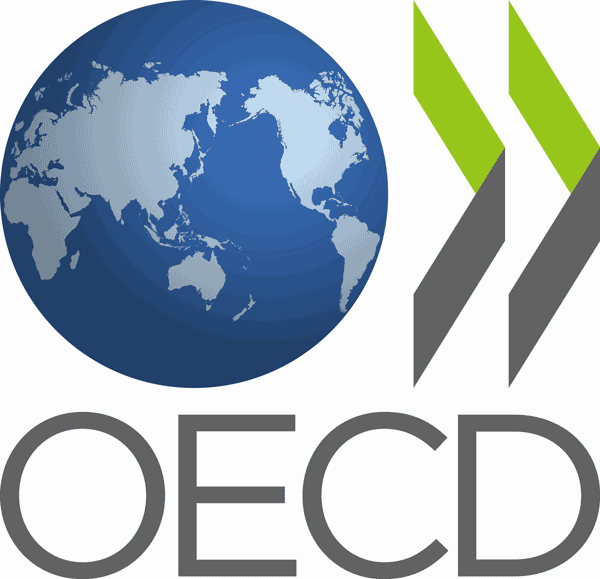
経済協力開発機構(けいざいきょうりょくかいはつきこう)は、国際経済全般について協議することを目的とした国際機関。公用語の正式名称は、英語では"Organisation[1] for Economic Co-operation and Development"(イギリス英語表記)、フランス語では"Organisation de Coopération et de Développement Economiques"。略称は英語ではOECD、フランス語ではOCDE。
本部事務局はパリ16区の旧ラ・ミュエット宮殿に置かれている。事務総長はアンヘル・グリア。
The Organisation for Economic Co-operation and Development (OECD; French: Organisation de Coopération et de Développement Économiques, OCDE) is an intergovernmental economic organisation with 37 member countries,[1] founded in 1961 to stimulate economic progress and world trade. It is a forum of countries describing themselves as committed to democracy and the market economy, providing a platform to compare policy experiences, seek answers to common problems, identify good practices and coordinate domestic and international policies of its members. Generally, OECD members are high-income economies with a very high Human Development Index (HDI) and are regarded as developed countries. As of 2017, the OECD member countries collectively comprised 62.2% of global nominal GDP (US$49.6 trillion)[3] and 42.8% of global GDP (Int$54.2 trillion) at purchasing power parity.[4] The OECD is an official United Nations observer.[5]
In 1948, the OECD originated as the Organisation for European Economic Co-operation (OEEC),[6] led by Robert Marjolin of France, to help administer the Marshall Plan (which was rejected by the Soviet Union and its satellite states).[7] This would be achieved by allocating United States financial aid and implementing economic programs for the reconstruction of Europe after World War II. (Similar reconstruction aid was sent to the war-torn Republic of China and post-war Korea, but not under the name "Marshall Plan".)[8]
In 1961, the OEEC was reformed into the Organisation for Economic Co-operation and Development by the Convention on the Organisation for Economic Co-operation and Development and membership was extended to non-European states.[9][10] The OECD's headquarters are at the Château de la Muette in Paris, France.[11] The OECD is funded by contributions from member countries at varying rates and had a total budget of €386 million in 2019.[2]
Although OECD does not have a power to enforce its decisions, which further require unanimous vote from its members, it is recognized as highly influential publisher of mostly economic data through publications as well as annual evaluations and rankings of members countries.[12]
L'Organisation de coopération et de développement économiques (OCDE) est une organisation internationale d'études économiques, dont les pays membres — des pays développés pour la plupart — ont en commun un système de gouvernement démocratique et une économie de marché. Elle joue essentiellement un rôle d'assemblée consultative1.
L'OCDE a succédé à l'Organisation européenne de coopération économique (OECE) issue du plan Marshall et de la Conférence des Seize (Conférence de coopération économique européenne) qui a existé de 1948 à 1960. Son but était l'établissement d'une organisation permanente chargée en premier lieu d'assurer la mise en œuvre du programme de relèvement commun (le plan Marshall), et, en particulier, d'en superviser la répartition2.
En 2020, l'OCDE compte 37 pays membres et regroupe plusieurs centaines d'experts. Elle publie fréquemment des études économiques et sociales — analyses, prévisions et recommandations de politique économique — et des statistiques, principalement concernant ses pays membres.
Le siège de l'OCDE se situe à Paris (16e), au château de la Muette. L'organisation possède également des bureaux dans plusieurs autres métropoles, notamment à Berlin, Mexico, Tokyo et Washington.
L'Organizzazione per la cooperazione e lo sviluppo economico (OCSE) – in inglese Organization for Economic Co-operation and Development (OECD), e in francese Organisation de coopération et de développement économiques (OCDE) – è un'organizzazione internazionale di studi economici per i paesi membri, paesi sviluppati aventi in comune un'economia di mercato.
L'organizzazione svolge prevalentemente un ruolo di assemblea consultiva che consente un'occasione di confronto delle esperienze politiche, per la risoluzione dei problemi comuni, l'identificazione di pratiche commerciali e il coordinamento delle politiche locali e internazionali dei paesi membri[1]. Ha sede a Parigi nello Château de la Muette[2].
Gli ultimi paesi ad aver aderito all'OCSE sono la Colombia (28 aprile 2020),la Lettonia (1º luglio 2016) e la Lituania (5 luglio 2018), per un totale di 36 paesi membri.
La Organización para la Cooperación y el Desarrollo Económico1 (OCDE) es un organismo de cooperación internacional, compuesto por 37 estados,34 cuyo objetivo es coordinar sus políticas económicas y sociales. La OCDE fue fundada en 1961 y su sede central se encuentra en el Château de la Muette en París (Francia). Los idiomas oficiales de la entidad son el francés y el inglés.2
En la OCDE, los representantes de los países miembros se reúnen para intercambiar información y armonizar políticas con el objetivo de maximizar su crecimiento económico y colaborar a su desarrollo y al de los países no miembros.
Conocida como «club de los países ricos»,56 a partir de 2017, sus países miembros comprendieron colectivamente el 62,2 % del PIB nominal global (US$49,6 billones) y el 42,8 % del PIB global (Int US$54,2 billones).7
Организа́ция экономи́ческого сотру́дничества и разви́тия (сокр. ОЭСР, англ. Organisation for Economic Co-operation and Development, OECD) — международная экономическая организация развитых стран, признающих принципы представительной демократии и свободной рыночной экономики.
Создана в 1948 году под названием Организа́ция европе́йского экономи́ческого сотру́дничества (англ. Organisation for European Economic Co-operation, OEEC) для координации проектов экономической реконструкции Европы в рамках плана Маршалла.
Штаб-квартира организации располагается в Шато де ла Мюетт, в Париже. Генеральный секретарь (с 2006 года) — Хосе Анхель Гурриа Тревиньо (Мексика). Руководящим органом ОЭСР является совет представителей стран — членов организации. Все решения в нём принимаются на основе консенсуса.
По данным на 2011 год, в странах ОЭСР проживало 18 % населения мира[2].


Slowenien (slowenisch Slovenija, amtlich Republik Slowenien, slowenisch Republika Slovenija) ist ein demokratischer Staat in Europa mit rund 2 Millionen Einwohnern, der an Italien, Österreich, Ungarn und Kroatien grenzt. Hauptstadt und zugleich größte Stadt des Landes ist das zentral gelegene Ljubljana (deutsch Laibach). Weitere wichtige Städte sind Maribor, Celje, Kranj, Koper und Velenje. Im Jahr 2004 trat Slowenien der EU und der NATO bei, 2007 auch der Eurozone. Das Land ist eine demokratisch verfasste parlamentarische Republik.
Das Gebiet des heutigen Sloweniens wurde Anfang des 6. Jahrhunderts von den Slawen besiedelt, die das Fürstentum Karantanien gründeten. Im Jahr 788 eroberten die Franken das Gebiet und die Bistümer Aquileia und Salzburg missionierten es. Im 11. Jahrhundert wurde das Land in das Heilige Römische Reich eingegliedert und 1364 zum Herzogtum Krain erhoben. In den folgenden Jahrhunderten geriet das Territorium an die Habsburgermonarchie. Nach der Auflösung Österreich-Ungarns 1918 ging das vormalige Kronland im neu gegründeten Königreich Jugoslawien auf. Nach dem Ende des Zweiten Weltkrieges existierte Slowenien als Teilrepublik im sozialistischen Jugoslawien. Nach der Unabhängigkeitserklärung am 25. Juni 1991 und dem 10-Tage-Krieg wurde Slowenien ein eigenständiger Nationalstaat und am 22. Mai 1992 eigenständiges Mitglied der UNO.
Slowenien ist heute das wohlhabendste Land des ehemaligen Jugoslawiens. Es verzeichnet sowohl im Bezug auf die politische als auch die wirtschaftliche Transformation überdurchschnittlich hohe Erfolge.[4] Im Index der menschlichen Entwicklung belegte Slowenien 2019 Rang 24 von 189 Ländern weltweit.[5]
スロベニア共和国(スロベニアきょうわこく、スロベニア語: Slovenija: ![]() [sloˈveːnija])、通称スロベニア、スロヴェニアは、中央ヨーロッパに位置する国で[1]、主要なヨーロッパの文化や交易の交差路である[2][3]。
[sloˈveːnija])、通称スロベニア、スロヴェニアは、中央ヨーロッパに位置する国で[1]、主要なヨーロッパの文化や交易の交差路である[2][3]。
スロベニアは西はイタリア、北はオーストリア、南や南東はクロアチア、北東でハンガリーとそれぞれ国境を接している。[4]国土面積は20,273km2 (7,827 sq mi)で、人口は205万人を擁する。[5]議会制共和国で、欧州連合や北大西洋条約機構の加盟国である。[6]スロベニアではアルプス山脈とディナル・アルプス山脈、地中海のアドリア海に沿った少ない海岸部分のヨーロッパの4つの大きな地理的な部分が接している。[7][8] スロベニアの国土はモザイク状の構造で多様性に富んだ景観や[8]、生物多様性があり[9][10]、この多様性は自然の特質と長期の人間の存在による。[11]主に丘陵地の気候[7]であるが、スロベニアの国土は大陸性気候の影響を受け、プリモルスカ地方は亜地中海性気候に恵まれており、スロベニア北西部では高山気候が見られる。[12] スロベニアはヨーロッパの国の中でも水が豊かな国の一つで[13]、密度が高い河川や豊かな帯水層、かなりのカルスト地形(クラス地方はカルストの語源)の地下水流がある[14]。スロベニアの国土の半分以上は森林に覆われている[15]。スロベニアの集落は分散しており、一様ではない[16]。
スラヴ語派やゲルマン語派、ロマンス諸語、フィン・ウゴル語派などの言語や文化のグループはスロベニアで接し領域は均質でないが[17][18][19] 、人口数ではスロベニア人が優勢である。[20]スロベニア語はスロベニアの唯一の公用語であるが、イタリア語やハンガリー語などは地域の少数言語となっている。スロベニアの大部分は宗教と分離しているが[21]、文化やアイデンティティの面ではカトリック教会やルーテル教会の大きな影響を受けている。[22] スロベニアの経済は小規模で、輸出志向型工業化の経済[23] でありその後の国際的な経済情勢に大きく影響を受けている。[24]スロベニアの経済は2000年代後半に始まった欧州経済危機により厳しい痛手を負っている。[25] 経済の主要な分野は第三次産業で、工業や建設がそれに続く。[26]
多くのスロベニア人がスポーツ界で成功しており、特にウィンタースポーツ、ウォータースポーツ、登山、耐久性が要求されるエンデュランススポーツで顕著である。[27]
Slovenia (/sloʊˈviːniə, slə-/ (![]() listen)[10][11] sloh-VEE-nee-ə; Slovene: Slovenija [slɔˈʋèːnija]),[12] officially the Republic of Slovenia (Slovene:
listen)[10][11] sloh-VEE-nee-ə; Slovene: Slovenija [slɔˈʋèːnija]),[12] officially the Republic of Slovenia (Slovene: ![]() Republika Slovenija (help·info),[13] abbr.: RS[14]), is a country located in Central Europe at the crossroads of main European cultural and trade routes.[15][16] It is bordered by Italy to the west, Austria to the north, Hungary to the northeast, Croatia to the southeast, and the Adriatic Sea to the southwest.[17] Slovenia covers 20,271 square kilometers (7,827 sq mi) and has a population of 2.095 million.[18] One of the successor states of the former Yugoslavia, Slovenia is now a parliamentary republic[19] and member nation of the European Union, United Nations, and NATO.[20] The capital and largest city is Ljubljana.[21]
Republika Slovenija (help·info),[13] abbr.: RS[14]), is a country located in Central Europe at the crossroads of main European cultural and trade routes.[15][16] It is bordered by Italy to the west, Austria to the north, Hungary to the northeast, Croatia to the southeast, and the Adriatic Sea to the southwest.[17] Slovenia covers 20,271 square kilometers (7,827 sq mi) and has a population of 2.095 million.[18] One of the successor states of the former Yugoslavia, Slovenia is now a parliamentary republic[19] and member nation of the European Union, United Nations, and NATO.[20] The capital and largest city is Ljubljana.[21]
Slovenia has a mostly mountainous terrain[22] with a mainly continental climate,[23] with the exception of the Slovene Littoral, which has a sub-Mediterranean climate, and of the Julian Alps in the northwest, which have an Alpine climate.[24] Additionally, the Dinaric Alps and the Pannonian Plain meet on the territory of Slovenia. The country, marked by significant biological diversity,[25][26] is one of the most water-rich in Europe,[27] with a dense river network, a rich aquifer system, and significant karst underground watercourses.[28] Over half of the territory is covered by forest.[29] The human settlement of Slovenia is dispersed and uneven.[30]
Slovenia has historically been the crossroads of Slavic, Germanic, and Romance languages and cultures.[31][32][33] Ethnic Slovenes make up more than 80% of the population.[34] The South Slavic language Slovene is the official language throughout the country. Slovenia is a largely secularized country,[35] but Catholicism and Lutheranism have significantly influenced its culture and identity.[36] The economy of Slovenia is small, open and export-oriented[citation needed] and is thus strongly influenced by the conditions of its exporting partners' economies. This is especially true with Germany, Slovenia's biggest trade partner.[37] Like most of the developed world, Slovenia was severely hurt by the Eurozone crisis beginning in 2009, but started to recover in 2014.[38][39] The main economic driver for the country is the services industry, followed by manufacturing and construction.[40]
Historically, the territory of Slovenia has formed part of many different states, such as: the Roman Empire, Byzantine Empire, Carolingian Empire, the Holy Roman Empire, the Kingdom of Hungary, the Republic of Venice, the Illyrian Provinces of the First French Empire, the Austrian Empire and Austro-Hungarian Empire. In October 1918, the Slovenes exercised self-determination for the first time by co-founding the State of Slovenes, Croats and Serbs. In December 1918 they merged with the Kingdom of Serbia into the Kingdom of Serbs, Croats and Slovenes (renamed the Kingdom of Yugoslavia in 1929).
During World War II (1939–1945) Germany, Italy, and Hungary occupied and annexed the territories included in today's Slovenia (1941–1945), with a tiny area transferred to the Independent State of Croatia, a Nazi puppet state.[41] In 1945 Slovenia became a founding member of the Federal People's Republic of Yugoslavia, renamed in 1963 as the Socialist Federal Republic of Yugoslavia. In the first years after World War II this state was initially allied with the Eastern Bloc, but because of the Tito-Stalin split in 1948 it never subscribed to the Warsaw Pact and in 1961 became one of the founders of the Non-Aligned Movement.[citation needed]
In June 1991, after the introduction of multi-party representative democracy, Slovenia became the first republic that split from Yugoslavia and became an independent sovereign state.[4] In 2004, it entered NATO and the European Union; in 2007 became the first formerly communist country to join the Eurozone;[42] and in 2010 it joined the OECD, a global association of high-income developed countries.[43] Slovenia is a developed country with an advanced, high-income economy[44][45] and a very high Human Development Index.[46] It ranks 12th in the inequality-adjusted human development index.
La Slovénie, en forme longue la république de Slovénie, en slovène : Slovenija et Republika Slovenija, est un pays d’Europe centrale au carrefour des principales cultures européennes. Sa capitale est Ljubljana. Le pays partage ses frontières avec l'Italie à l'ouest, l’Autriche au nord, la Hongrie à l'est-nord-est et la Croatie au sud-est. La Slovénie est également bordée par la mer Adriatique au sud-ouest. Comptant environ 2 millions d'habitants, la Slovénie est un État membre de l'Union européenne.
Historiquement, le territoire de la Slovénie a intégré de nombreux États différents : l'Empire romain, l'Empire byzantin, l'Empire carolingien, le Saint-Empire romain germanique, le Royaume de Hongrie, la République de Venise, le territoire des Provinces Ilyriennes du Premier Empire français, l'Empire d'Autriche, l'Empire austro-hongrois et enfin la Yougoslavie.
C'est en octobre 1918 que les Slovènes ont cofondé l'État des Slovènes, des Croates et des Serbes. Cette monarchie sera appelée royaume de Yougoslavie à partir de 1929. Pendant la seconde guerre mondiale, la Slovénie est démembrée et annexée par l'Allemagne, l'Italie et la Hongrie. Une toute petite part est donnée à la Croatie, État fantoche nazi. En 1945, la Slovénie devient un membre fondateur de la République fédérative socialiste de Yougoslavie. Dans les premières années de son existence, cet État était allié au bloc de l'Est, dominé par l'Union soviétique, bien que n'ayant pas intégré le Pacte de Varsovie. En 1961, la Yougoslavie devient un des fondateurs du mouvement des non-alignés.
En 1991, après l'introduction du multipartisme et de la démocratie, la Slovénie est devenue la première république à faire sécession de la Yougoslavie en devenant un État souverain indépendant. La République de Slovénie entre dans l'Union européenne et l'OTAN en 2004. En 2007, le pays devient le premier ancien pays communiste à intégrer la zone euro.
La Slovénie est aujourd'hui un pays développé à revenu élevé, avec un indice de développement humain élevé, se classant 13e dans l'indice de développement humain ajusté aux inégalités.
La Slovenia, ufficialmente Repubblica di Slovenia (in sloveno Republika Slovenija, in ungherese Szlovén Köztársaság), è uno Stato sovrano dell'Europa centrale, confinante a ovest con l'Italia (Friuli-Venezia Giulia), a nord con l'Austria, a est con l'Ungheria e la Croazia a sud, affacciandosi a sud-ovest sul mare Adriatico (golfo di Trieste). La sua capitale è Lubiana.
Dal 1º maggio 2004 la Slovenia è membro dell'Unione europea e la valuta nazionale, dal 1º gennaio 2007, è l'euro, che ha sostituito il tallero sloveno, adottato nel 1991 dopo l'indipendenza; in precedenza la moneta era il dinaro iugoslavo. Nella regione istriana del Paese vive una comunità autoctona italiana, mentre nella zona di confine orientale si trova quella ungherese; crescente è l'immigrazione serba e bosniaco-erzegovina. La Festa nazionale slovena, così come quella croata, ricorre il 25 giugno, anniversario della dichiarazione d'indipendenza del 1991 dalla Repubblica Socialista Federale di Iugoslavia.
Eslovenia, oficialmente República de Eslovenia (en esloveno: ![]() Republika Slovenija (?·i) antigua Carantania) es uno de los veintisiete estados soberanos que forman la Unión Europea. Limita con Italia al oeste; con el mar Adriático, al suroeste; con Croacia al sur y al este; con Hungría, al noreste; y con Austria, al norte. Tiene una población de 2 080 908 habitantes a fecha del 1 de enero de 2019.5 La capital y ciudad más poblada es Liubliana.
Republika Slovenija (?·i) antigua Carantania) es uno de los veintisiete estados soberanos que forman la Unión Europea. Limita con Italia al oeste; con el mar Adriático, al suroeste; con Croacia al sur y al este; con Hungría, al noreste; y con Austria, al norte. Tiene una población de 2 080 908 habitantes a fecha del 1 de enero de 2019.5 La capital y ciudad más poblada es Liubliana.
La actual Eslovenia se formó el 25 de junio de 1991 al independizarse de Yugoslavia, tras un conflicto armado relativamente corto denominado Guerra de los diez días (que fue la primera guerra de la disolución de Yugoslavia), en la que se opuso al ejército de la antigua federación yugoslava. Por aquel entonces, ya era el país más desarrollado de aquella federación.
Cultural e históricamente, Eslovenia gravita hacia Italia, Austria y Alemania (cultura católica y protestante). A lo largo de la historia, Eslovenia siempre fue parte de los imperios, reinos, etc. de Europa central y nunca ha sido parte de los cuerpos políticos que gobernaron la mayoría de los Balcanes, por ejemplo del Imperio Romano de Oriente (iglesia ortodoxa) y el Sultanato de Turquía (islam).
En 2004 se adhirió a la Unión Europea.6 Eslovenia se integró en el euro el 1 de enero de 2007, y en el área de Schengen, en 2004. Ya en 1993 se había adherido al Consejo de Europa y desde julio de 2010 forma parte de la OCDE.
Слове́ния (словен. Slovenija), официальное название — Респу́блика Слове́ния (словен. Republika Slovenija) — государство в Южной Европе. Территория — 20 236 км², население — 2 089 310 человек (июль 2019 год)[8]. Занимает 144-е место в мире по численности населения и 150-е по территории.
Столица — Любляна. Государственный язык — словенский.
Унитарная, парламентская республика. В марте 2020 года пост премьер-министра занял Янез Янша[9].
Административное деление: 210 общин, в том числе 11 городов.
Расположена в предальпийской части Балканского полуострова. Омывается водами Адриатического моря с юго-запада. На западе граничит с Италией, на севере — с Австрией, на северо-востоке — с Венгрией, на востоке и юге — с Хорватией.
Индустриальная страна с динамично развивающейся экономикой. Объём ВВП за 2011 год составил 58,979 миллиарда долларов США (около 29 179 долларов США на душу населения). Денежная единица — евро.
Независимость страны провозглашена 25 июня 1991 года. 29 марта 2004 Словения вступила в НАТО, а 1 мая 2004 года вступила в Европейский союз.
 Internationale Städte
Internationale Städte
 Architektur
Architektur
 Geographie
Geographie
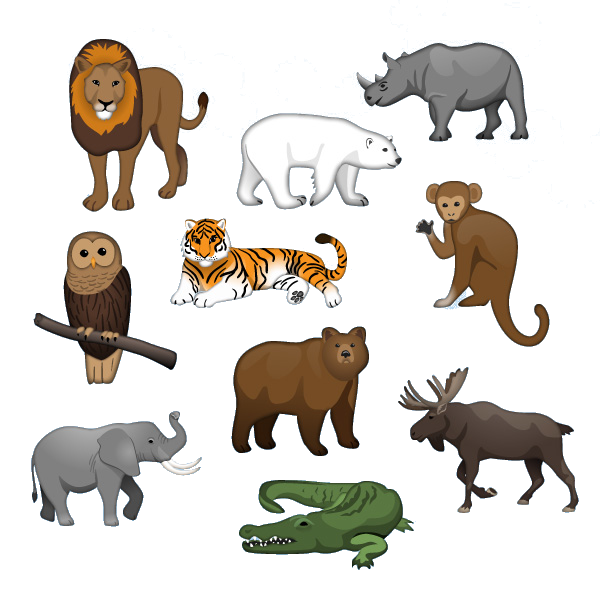 Tierwelt
Tierwelt
 Sport
Sport
 Wirtschaft und Handel
Wirtschaft und Handel
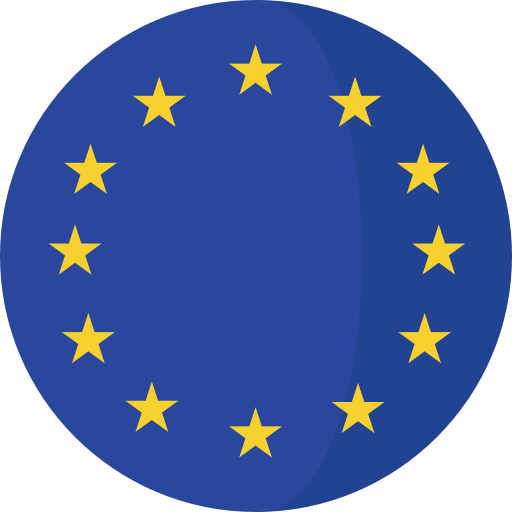 Europäische Union
Europäische Union
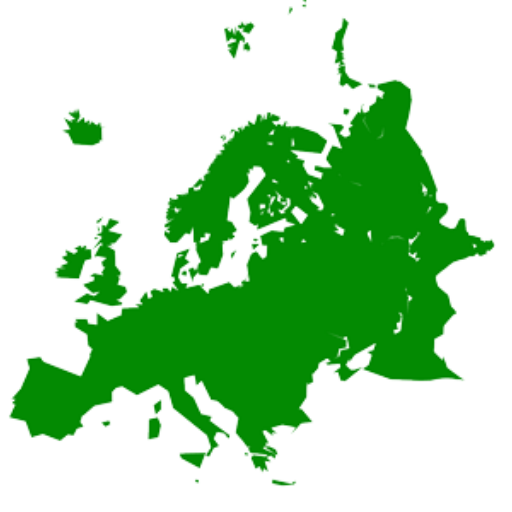 Staaten Europas
Staaten Europas